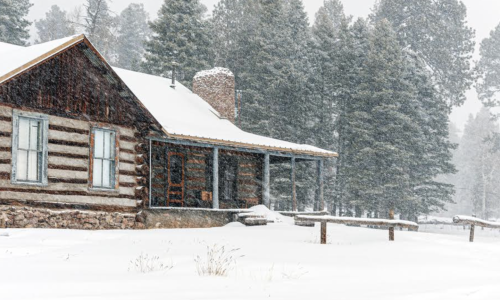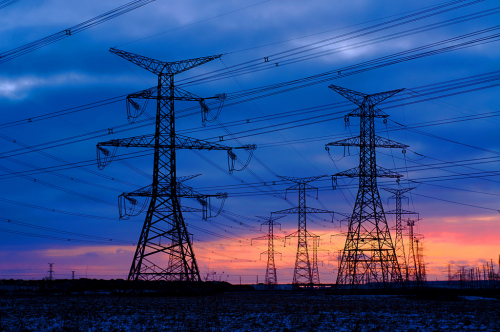The technology is composed by a combination of two wetness sensors, a temperature sensor and a thermal conductive sheet with a radiation sensitive surface (black). The sheet is tilted with borders the way, that directed precipitation can’t access the lower side. One wetness sensor is facing the sky, the other is facing the ground. The temperature sensor measures the temperature of the sheet. If this drops below the air temperature, then dew will cover both sides and the wetness sensors will detect the same signal (no matter if it’s freezing). If rain or snow will fall, then the signal of the upper sensors will be bigger. In combination with the temperature signal there is sufficient information whether a heating of the rain gauge is required or not.
Meteorological stations are often installed in remote locations far from power infrastructure and therefore powered with low energy supply. Rain gauges need to be heated up, if the air temperature drops below +4°C in order to detect any precipitation in freezing conditions, because ground frost may occur, and a not heated device would freeze. Battery powered meteorological stations can’t provide a permanent heating energy which results in a loss of data during the period of low
temperatures with rain and snowfall. This requires a method which can detect, if a directed freezing precipitation (icy rain or snow) occurs or if the precipitation is diffuse (fog, dew) which isn’t of interest to measure with a rain gauge. This detector must be able to function without a heating requirement and can be connected to common meteorological data loggers. During frost temperature periods
The technology is composed by a combination of two wetness sensors, a temperature sensor and a thermal conductive sheet with a radiation sensitive surface (black). The sheet is tilted with borders the way, that directed precipitation can’t access the lower side. One wetness sensor is facing the sky, the other is facing the ground. The temperature sensor measures the temperature of the sheet. If this drops below the air temperature, then dew will cover both sides and the wetness sensors will detect the same signal (no matter if it’s freezing). If rain or snow will fall, then the signal of the upper sensors will be bigger. In combination with the temperature signal there is sufficient information whether a heating of the rain gauge is required or not.
Applications:
- Battery powered meteorological station
- Freezing precipitations detector
- Rain gauge heater
Opportunity:
Pre-manufacturing prototyping; Co-investment in the development of near-market applications







